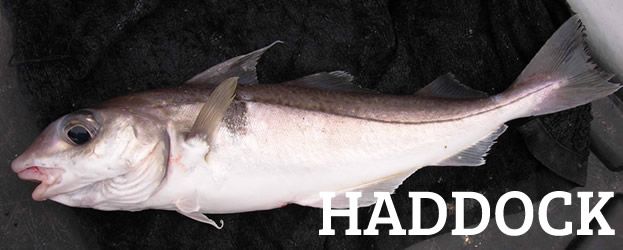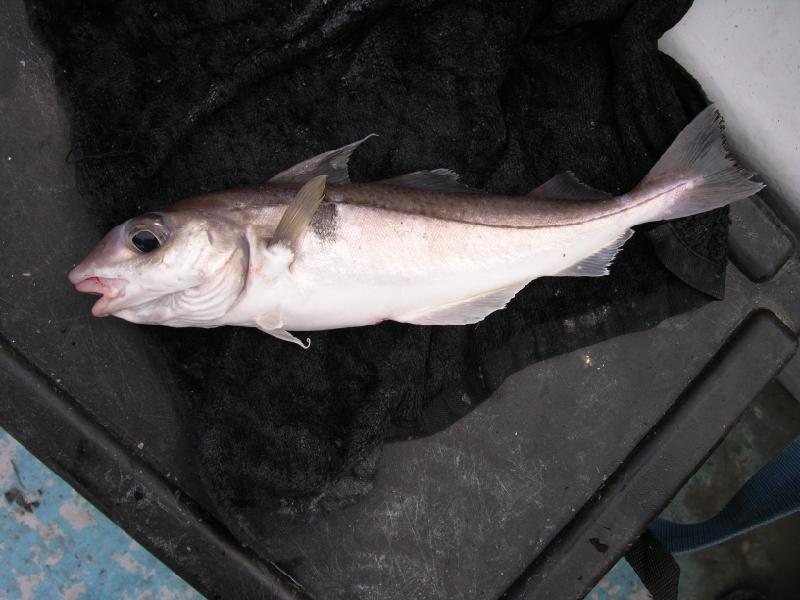Haddock
Haddock (Melanogrammus aeglifinus)
Irish Record 5.39 kilo taken on 2621.02.2010 by Tony Santry at Union Hall.
Specimen 5.51lbs, or 2.5 kilo, or 63cm total length
Identification
The Haddock has a white, cream under-belly leading to silver-bronze flanks and a darker back. The lateral line curves upwards towards the head, with a distinctive dark spot just above the pectoral fins. The upper jaw is snout-like, protruding the lower jaw. It has large eyes and similar to Cod, three dorsal fins. The front dorsal is larger and triangular in shape. The tail is slightly forked.
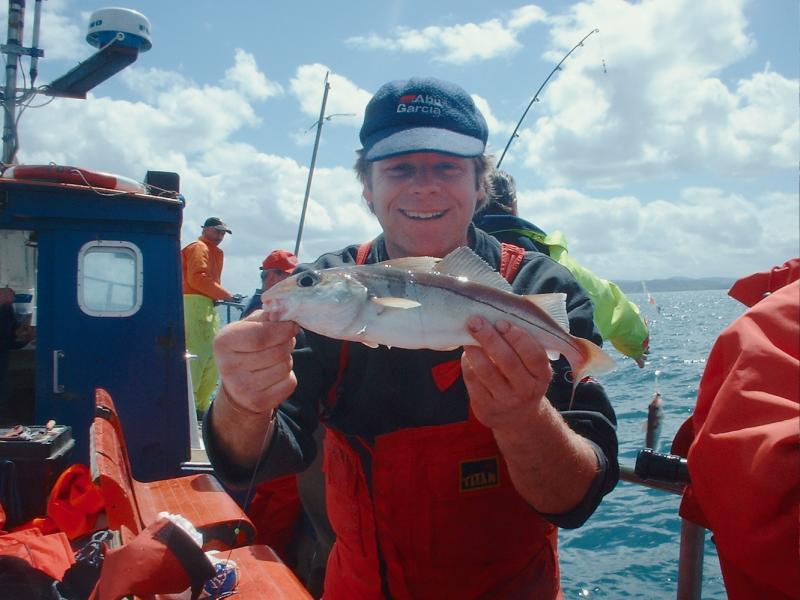
Haddock were once prolific in Donegal and the North Antrim Coast
Where to catch
Haddock were present in large numbers around our coasts at one time but commercial pressure has totally decimated the shoals in recent years. The Causeway Bank, Portrush was perhaps the most famous area with many specimen fish recorded each year, but they have all but disappeared.
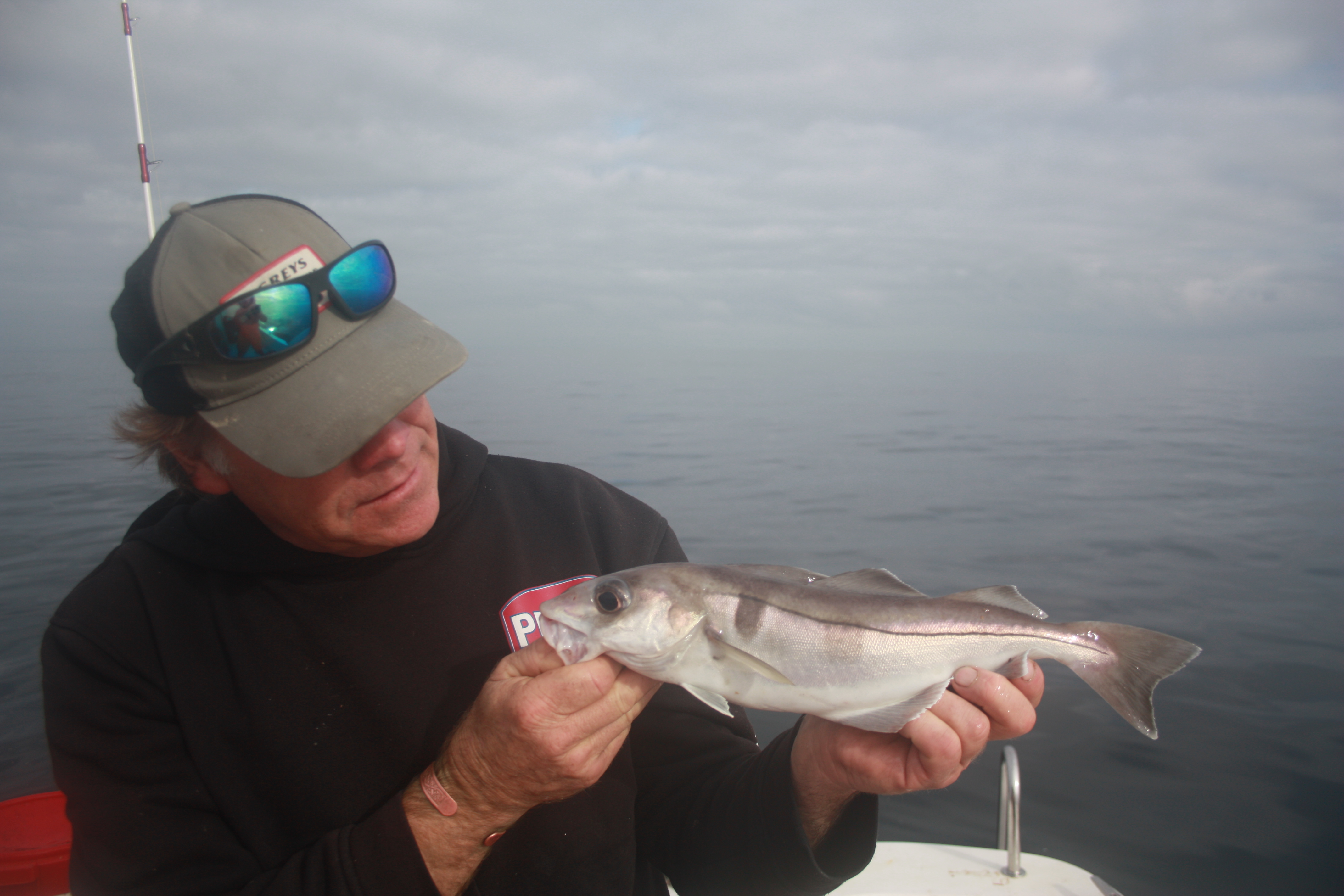
As an indication of the lack of population, and in particular, adult fish, the Irish Specimen Fish Committee lowered the qualifying weight of a specimen, but still, very few are recorded. The large fish in the north are now gone, but the occasional specimen appears from the southern off-shore marks out of Cork, Union Hall and in particular, Castletownbere.
When to catch
For the boat angler lucky enough to run into this species, the season runs from spring and early summer, depending on venue, through to the end of the year.
Bait
Usually fish baits such as Mackerel strip, Sand eel or Herring, but Ragworm and Lugworm are superb alternatives when targeting Haddock. On several occasions whilst fishing out of Downings in North Donegal, I witnessed anglers using baits such as Mussel and Scallops to out fish any other bait available.
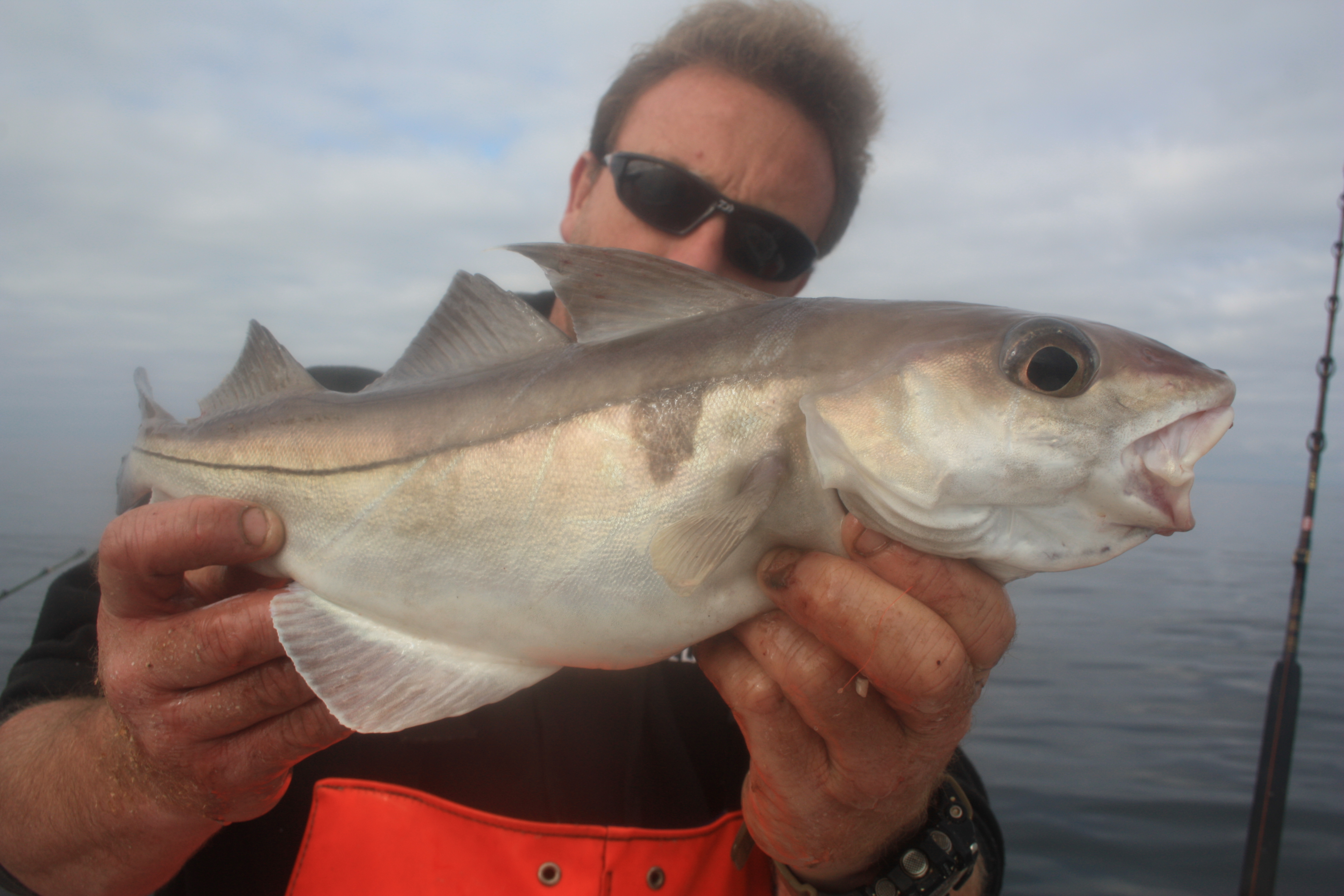
Methods
Haddock spoons, imported from Norway, were renowned as a deadly method for this species. They consisted of a trace of silver elongated spoons, jigged just off the seabed, either with or without bait added. However, I never had any particularly amazing results with them. I found that small, rotating Colorado spoons and beads above each baited hook were far superior in catch rates. My favourite “mixed species” rig always worked well for Haddock. This consisted of one hook above the weight, and two hooks below, attached to an anti-tangle boom or similar.
Haddock fight extremely well on balanced boat gear. A 20lb class boat rod and matching real is ideal, for an enjoyable day’s sport. Haddock will not give up and fight all the way to the surface. Their downfall is that they are incredibly tasty as well.




